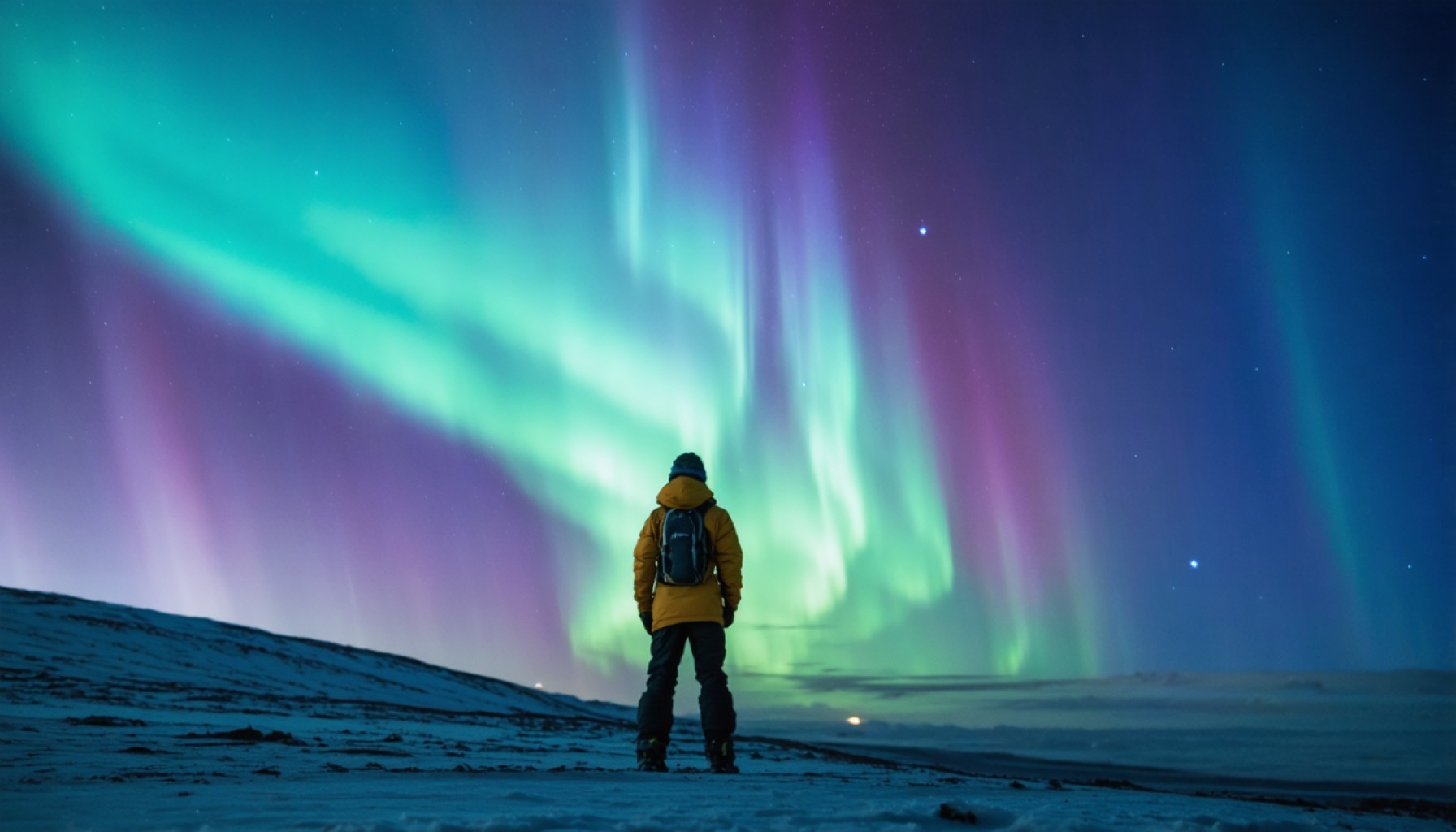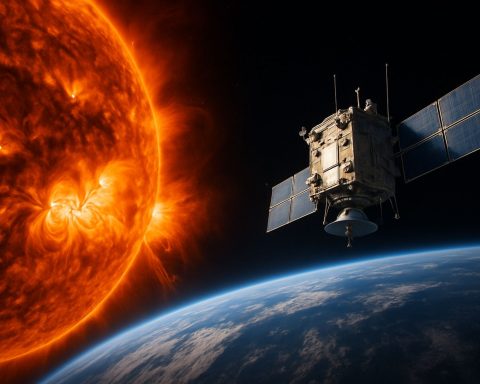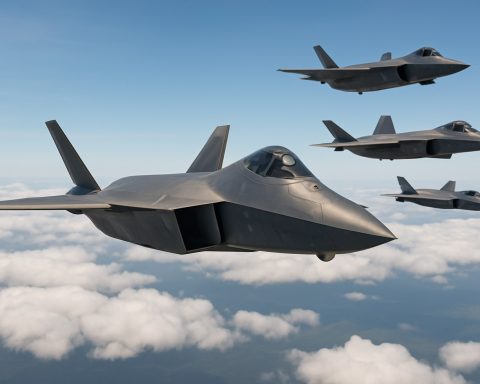- The AWESOME mission, backed by NASA, explores the interactions between auroras and Earth’s upper atmosphere.
- University of Alaska Fairbanks students actively participate, capturing vital data with strategically placed cameras.
- Professor Mark Conde guides students, emphasizing precision in observing space phenomena despite Arctic weather challenges.
- Students relish real-world problem-solving amidst Alaska’s wilderness, gaining hands-on scientific experience.
- The mission underscores the value of immersive education beyond classrooms, as students contribute to pioneering research.
- UAF’s strategic Arctic location offers unparalleled opportunities in diverse scientific fields, fostering exploration and discovery.
Amid the ethereal glow of the northern lights, a team of enthusiastic student researchers from the University of Alaska Fairbanks (UAF) are seizing the chance of a lifetime. In the remote stretches of Alaska’s wilderness, these students are not merely observers but active participants in a high-stakes scientific endeavor—a NASA-backed mission named AWESOME. The mission aims to unravel the enigmatic interactions between auroral activity and the Earth’s upper atmosphere.
Propelled by curiosity and guided by UAF space physics professor Mark Conde, the students embark on this daring quest, skillfully operating cameras at strategic points across Alaska. From the Poker Flat Research Range to the isolated outposts of Utqiagvik, Eagle, and Kaktovik, these young researchers are the eyes of the mission, capturing the celestial dance between space and sky. Each click of the camera is a critical move in an elaborate game of triangulation, as they track the vibrant vapor tracers released by rockets over the Arctic Ocean.
Despite the chill and isolation, spirits soar high. Michael Martins, a recent UAF graduate, relishes the immersive challenge the mission presents. Trading the comforts of Fairbanks for the icy expanses of Alaska, he thrives on the opportunity to solve real-world problems under the vast, awe-inspiring northern skies.
The stakes are significant. As Conde himself highlights, the success of the multi-million-dollar experiment rests largely on the precision and diligence of these students. Clouds, an unpredictable adversary, risk obscuring essential observations. Yet, failure is not an option. With an unwavering commitment, students rise to the occasion, ensuring that no data is lost to the whims of Arctic weather.
For graduate student Chynna Spitler, stationed at Poker Flat, the experience is nothing short of exhilarating. The buzzing anticipation of a rocket launch combined with the tangible thrill of witnessing live science incubates a profound sense of accomplishment.
In Kaktovik, undergraduate Vivian Palmer soaks in the beauty of her surroundings. The mission is an educational journey beyond textbooks—a chance to learn hands-on in a landscape as otherworldly as the aurorae she studies. Under the mentorship of dedicated scientists like Don Hampton, Palmer gains insights that are as valuable as the mission itself.
Vincent Ledvina, enduring the solitude of Venetie, finds fulfillment in this cosmic venture. His affinity for the aurora fuels a deeper appreciation for the complex questions AWESOME seeks to answer. The allure of the northern lights is not just visual but intellectual—a shimmering beacon drawing researchers to probe the secrets of the skies.
For the students of UAF, opportunities like these are plentiful. Positioned strategically in the Arctic, the university serves as a launchpad for aspirations in diverse sciences. From space physics to glaciology, UAF provides access to some of Earth’s most untamed and enlightening study environments.
The AWESOME mission stands as a testament to the power of education and exploration. Students, under the arch of the aurora, demonstrate that learning persists beyond the confines of classrooms. They become pioneers on the frontier of scientific discovery, illuminating the hidden intricacies of nature’s most captivating phenomenon. Their journey is a vivid reminder that in the dance of the auroras, the sky is not the limit but the beginning of endless possibilities.
Unlocking the Mysteries of the Northern Lights: What You Need to Know about NASA’s AWESOME Mission
Understanding the Northern Lights: The AWESOME Mission
NASA’s AWESOME mission, spearheaded by the University of Alaska Fairbanks (UAF), is a critical scientific endeavor aiming to uncover the intricate interactions between auroral activities and the Earth’s upper atmosphere. The mission leverages the unique location of Alaska, which offers a prime vantage point for observing the aurora borealis, thanks to its high latitude and dark skies.
Key Features of the AWESOME Mission
– Triangulation Techniques: The student researchers employ triangulation to track the vapor tracers released by rockets. These tracers provide invaluable data on atmospheric composition and dynamics.
– Strategic Observation Points: The mission covers multiple locations, including Poker Flat Research Range, Utqiagvik, Eagle, and Kaktovik, each chosen for its strategic advantage in observing auroral phenomena.
– Hands-On Learning: Students gain hands-on experience, learning to solve real-world problems and adapt to challenges such as unpredictable weather conditions, which can obscure observations.
Real-World Use Cases
The insights from the AWESOME mission are not just academic. Understanding auroral interactions can have far-reaching implications:
– Satellite Communications: Auroral activity can disrupt radio signals and satellite communications. By studying these interactions, scientists can improve communication technologies and predict disruptions.
– Climate Science: Insights into the upper atmosphere contribute to broader climate models, enhancing our understanding of global weather patterns.
Industry Trends and Market Predictions
Given the growing interest in space exploration and the expanding field of atmospheric sciences, initiatives like the AWESOME mission signal a burgeoning market for experts trained in these areas. With the advancement of satellite technology and atmospheric research, the demand for skilled personnel in space weather prediction and climate science is projected to rise.
Challenges and Considerations
– Weather Dependencies: The mission faces significant challenges from Arctic weather, with cloud cover posing a major threat to observation efforts.
– Resource Intensive: The mission relies on significant financial investments and technological resources, underscoring the need for continuous funding and support.
How-To: Observing the Northern Lights
1. Choose the Right Location: Areas like Alaska, Norway, and Canada are ideal due to their high latitude.
2. Monitor Weather and Solar Activity: Check for clear skies and heightened solar activity to increase the chances of seeing a dazzling display.
3. Use the Right Equipment: A tripod-mounted camera with long exposure capabilities can capture stunning auroral images.
Actionable Tips for Aspiring Scientists
– Get Involved Early: Engage in university-led research projects or internships to gain practical experience.
– Stay Curious and Adapt: The unpredictable nature of field research requires a willingness to learn and adapt under challenging conditions.
– Network with Experts: Leverage mentorship opportunities to gain insights and advice from experienced scientists.
Recommended Resources
For those interested in similar missions or learning more about the auroral phenomenon, explore the resources provided by institutions like NASA and the University of Alaska Fairbanks.
Conclusion
NASA’s AWESOME mission exemplifies the confluence of education, exploration, and scientific discovery. By embracing the challenges and opportunities presented by the northern lights, students and researchers are not only unraveling atmospheric mysteries but also paving the way for future innovations in space and environmental science. Whether you’re an aspiring scientist or simply an enthusiast of the natural world, the aurora beckons with its celestial charm, inviting us all to look up and wonder.







